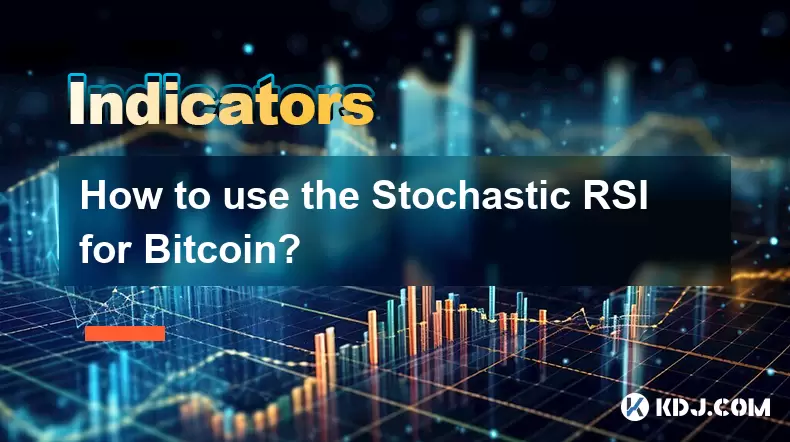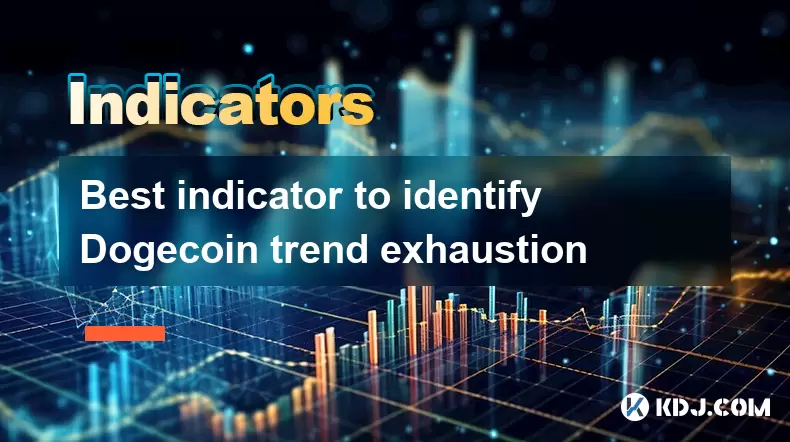-
 Bitcoin
Bitcoin $108,562.4295
0.46% -
 Ethereum
Ethereum $2,533.9553
1.52% -
 Tether USDt
Tether USDt $1.0002
-0.01% -
 XRP
XRP $2.2542
2.23% -
 BNB
BNB $662.4567
1.48% -
 Solana
Solana $151.4114
3.48% -
 USDC
USDC $0.9999
0.00% -
 TRON
TRON $0.2860
0.91% -
 Dogecoin
Dogecoin $0.1685
3.72% -
 Cardano
Cardano $0.5809
1.63% -
 Hyperliquid
Hyperliquid $39.2916
1.85% -
 Sui
Sui $2.8874
0.85% -
 Bitcoin Cash
Bitcoin Cash $496.5801
2.72% -
 Chainlink
Chainlink $13.3582
2.48% -
 UNUS SED LEO
UNUS SED LEO $9.0279
0.07% -
 Avalanche
Avalanche $18.0773
2.30% -
 Stellar
Stellar $0.2426
3.05% -
 Toncoin
Toncoin $2.9086
6.01% -
 Shiba Inu
Shiba Inu $0.0...01170
2.97% -
 Hedera
Hedera $0.1587
3.47% -
 Litecoin
Litecoin $87.4596
1.13% -
 Monero
Monero $317.0425
0.73% -
 Polkadot
Polkadot $3.3778
1.90% -
 Dai
Dai $0.9999
-0.01% -
 Ethena USDe
Ethena USDe $1.0001
-0.01% -
 Bitget Token
Bitget Token $4.4095
0.63% -
 Uniswap
Uniswap $7.3593
6.80% -
 Pepe
Pepe $0.0...09910
3.64% -
 Aave
Aave $274.7388
2.68% -
 Pi
Pi $0.4607
0.48%
How to use the Stochastic RSI for Bitcoin?
The Stochastic RSI helps Bitcoin traders identify overbought/oversold levels and potential reversals by combining RSI and Stochastic oscillator mechanics.
Jul 07, 2025 at 02:51 am

Understanding the Stochastic RSI in Cryptocurrency Trading
The Stochastic RSI (Relative Strength Index) is a momentum oscillator used by traders to identify overbought or oversold conditions in an asset. When applied to Bitcoin, it helps detect potential reversal points and confirm trends. Unlike traditional indicators, the Stochastic RSI combines two oscillators — the RSI and the Stochastic — to provide more refined signals. This makes it particularly useful for Bitcoin trading due to its high volatility and frequent price swings.
The Stochastic RSI formula involves calculating the RSI first, then applying the Stochastic formula on the RSI values. It typically uses a 14-period lookback window for RSI and another 3-period smoothing for the Stochastic part. The resulting indicator ranges between 0 and 100, with levels above 80 considered overbought and below 20 deemed oversold.
Setting Up the Stochastic RSI on a Bitcoin Chart
To begin using the Stochastic RSI for Bitcoin, you need to access a charting platform that supports this indicator. Popular platforms such as TradingView, Binance, and CoinMarketCap Pro offer built-in tools for adding the Stochastic RSI.
- Navigate to the chart section of your chosen platform.
- Locate the "Indicators" menu and search for "Stochastic RSI".
- Select the indicator to apply it to the chart.
- Customize the parameters if needed — default settings are usually set at 14 for RSI and 3 for the Stochastic component.
Ensure that the time frame aligns with your trading strategy — day traders may prefer 15-minute or 1-hour charts, while swing traders might opt for 4-hour or daily charts.
Interpreting Overbought and Oversold Levels for Bitcoin
One of the primary functions of the Stochastic RSI is to highlight overbought and oversold conditions. In the context of Bitcoin trading, these levels can signal potential reversals.
- When the Stochastic RSI crosses above 80, Bitcoin is considered overbought.
- A reading below 20 suggests that Bitcoin is oversold.
However, it's important to note that during strong trends, Bitcoin can remain overbought or oversold for extended periods. Relying solely on these levels without confirmation from other indicators can lead to false signals. For example, during a bull run, the Stochastic RSI may stay above 80, signaling overbought but not necessarily indicating a reversal.
Identifying Divergences Using the Stochastic RSI
Divergence occurs when the price of Bitcoin moves in one direction while the Stochastic RSI moves in the opposite direction. This often indicates weakening momentum and a possible trend reversal.
- Bullish divergence happens when Bitcoin makes a lower low, but the Stochastic RSI forms a higher low.
- Bearish divergence occurs when Bitcoin makes a higher high, but the Stochastic RSI forms a lower high.
Recognizing divergences requires careful observation of both price action and the indicator line. Traders often draw trendlines on the Stochastic RSI to better visualize these patterns and improve their accuracy in timing entries or exits.
Combining Stochastic RSI with Other Indicators
While the Stochastic RSI provides valuable insights, it works best when combined with complementary tools. Many traders use it alongside moving averages, volume indicators, or MACD to filter out noise and strengthen trade signals.
- Use a 50-day moving average to confirm long-term trends before acting on Stochastic RSI signals.
- Watch for volume spikes that coincide with overbought or oversold readings to validate potential reversals.
- Overlay the MACD to get additional confirmation of momentum shifts.
Avoid making decisions based solely on the Stochastic RSI, especially in volatile markets like Bitcoin where false breakouts are common. A multi-indicator approach increases the probability of successful trades.
Frequently Asked Questions
What is the difference between RSI and Stochastic RSI?
The RSI measures the speed and change of price movements to determine overbought or oversold levels. The Stochastic RSI applies the Stochastic formula to RSI values, making it more sensitive and prone to quicker signals.
Can I adjust the settings of the Stochastic RSI for Bitcoin trading?
Yes, most platforms allow customization of the lookback period and smoothing factor. Shorter periods increase sensitivity, which can be useful for scalping, while longer periods smooth out noise for longer-term strategies.
Is the Stochastic RSI reliable for all market conditions?
No single indicator is foolproof. In trending markets, the Stochastic RSI may give premature overbought or oversold signals. It performs best in ranging or consolidating markets.
How do I avoid false signals when using the Stochastic RSI for Bitcoin?
Use it in conjunction with other technical analysis tools, monitor volume changes, and wait for candlestick confirmations before entering a trade.
Disclaimer:info@kdj.com
The information provided is not trading advice. kdj.com does not assume any responsibility for any investments made based on the information provided in this article. Cryptocurrencies are highly volatile and it is highly recommended that you invest with caution after thorough research!
If you believe that the content used on this website infringes your copyright, please contact us immediately (info@kdj.com) and we will delete it promptly.
- Elon Musk, Andrew Yang, and Polymarket: What's the Buzz?
- 2025-07-07 10:30:12
- Lightchain AI's Bonus Round: The Final Chance Before Mainnet & Ecosystem Tools
- 2025-07-07 10:30:12
- TON Foundation, UAE Golden Visa, and Toncoin Staking: A New Chapter in Crypto Residency?
- 2025-07-07 10:50:12
- Altcoin Prices, Institutional Investors, and the Ethereum Rotation: What's the Deal?
- 2025-07-07 10:50:12
- TON Coin, Golden Visa, and UAE Denial: What's the Real Deal?
- 2025-07-07 10:55:12
- PEPE's Bullish Trend: Riding the 50% Gain Wave?
- 2025-07-07 10:55:12
Related knowledge

How to trade Dogecoin based on funding rates and open interest
Jul 07,2025 at 02:49am
Understanding Funding Rates in Dogecoin TradingFunding rates are periodic payments made to either long or short traders depending on the prevailing market conditions. In perpetual futures contracts, these rates help align the price of the contract with the spot price of Dogecoin (DOGE). When funding rates are positive, it indicates that long positions p...

How to spot manipulation on the Dogecoin chart
Jul 06,2025 at 12:35pm
Understanding the Basics of Chart ManipulationChart manipulation in the cryptocurrency space, particularly with Dogecoin, refers to artificial price movements caused by coordinated trading activities rather than genuine market demand. These manipulations are often executed by large holders (commonly known as whales) or organized groups aiming to mislead...

Bitcoincoin market structure break explained
Jul 07,2025 at 02:51am
Understanding the Dogecoin Market StructureDogecoin, initially created as a meme-based cryptocurrency, has evolved into a significant player in the crypto market. Its market structure refers to how price action is organized over time, including support and resistance levels, trend lines, and patterns that help traders anticipate future movements. A mark...

What is the significance of a Dogecoin engulfing candle pattern
Jul 06,2025 at 06:36am
Understanding the Engulfing Candle Pattern in CryptocurrencyThe engulfing candle pattern is a significant technical analysis tool used by traders to identify potential trend reversals in financial markets, including cryptocurrencies like Dogecoin. This pattern typically consists of two candles: the first one is relatively small and indicates the current...

Best indicator to identify Dogecoin trend exhaustion
Jul 07,2025 at 11:29am
Understanding Dogecoin Trend ExhaustionIdentifying trend exhaustion in Dogecoin (DOGE) is crucial for traders aiming to avoid late entries or potential reversals. Trend exhaustion occurs when a prevailing price movement loses momentum, often leading to a consolidation phase or reversal. In the volatile world of cryptocurrencies like Dogecoin, understand...

Dogecoin monthly chart analysis for long term investors
Jul 06,2025 at 10:08am
Understanding the Dogecoin Monthly ChartFor long-term investors, analyzing the monthly chart of Dogecoin (DOGE) provides a macro view of its price behavior over extended periods. The monthly chart captures major trends, key resistance and support levels, and potential reversal zones that are crucial for strategic investment planning. Unlike daily or hou...

How to trade Dogecoin based on funding rates and open interest
Jul 07,2025 at 02:49am
Understanding Funding Rates in Dogecoin TradingFunding rates are periodic payments made to either long or short traders depending on the prevailing market conditions. In perpetual futures contracts, these rates help align the price of the contract with the spot price of Dogecoin (DOGE). When funding rates are positive, it indicates that long positions p...

How to spot manipulation on the Dogecoin chart
Jul 06,2025 at 12:35pm
Understanding the Basics of Chart ManipulationChart manipulation in the cryptocurrency space, particularly with Dogecoin, refers to artificial price movements caused by coordinated trading activities rather than genuine market demand. These manipulations are often executed by large holders (commonly known as whales) or organized groups aiming to mislead...

Bitcoincoin market structure break explained
Jul 07,2025 at 02:51am
Understanding the Dogecoin Market StructureDogecoin, initially created as a meme-based cryptocurrency, has evolved into a significant player in the crypto market. Its market structure refers to how price action is organized over time, including support and resistance levels, trend lines, and patterns that help traders anticipate future movements. A mark...

What is the significance of a Dogecoin engulfing candle pattern
Jul 06,2025 at 06:36am
Understanding the Engulfing Candle Pattern in CryptocurrencyThe engulfing candle pattern is a significant technical analysis tool used by traders to identify potential trend reversals in financial markets, including cryptocurrencies like Dogecoin. This pattern typically consists of two candles: the first one is relatively small and indicates the current...

Best indicator to identify Dogecoin trend exhaustion
Jul 07,2025 at 11:29am
Understanding Dogecoin Trend ExhaustionIdentifying trend exhaustion in Dogecoin (DOGE) is crucial for traders aiming to avoid late entries or potential reversals. Trend exhaustion occurs when a prevailing price movement loses momentum, often leading to a consolidation phase or reversal. In the volatile world of cryptocurrencies like Dogecoin, understand...

Dogecoin monthly chart analysis for long term investors
Jul 06,2025 at 10:08am
Understanding the Dogecoin Monthly ChartFor long-term investors, analyzing the monthly chart of Dogecoin (DOGE) provides a macro view of its price behavior over extended periods. The monthly chart captures major trends, key resistance and support levels, and potential reversal zones that are crucial for strategic investment planning. Unlike daily or hou...
See all articles

























































































